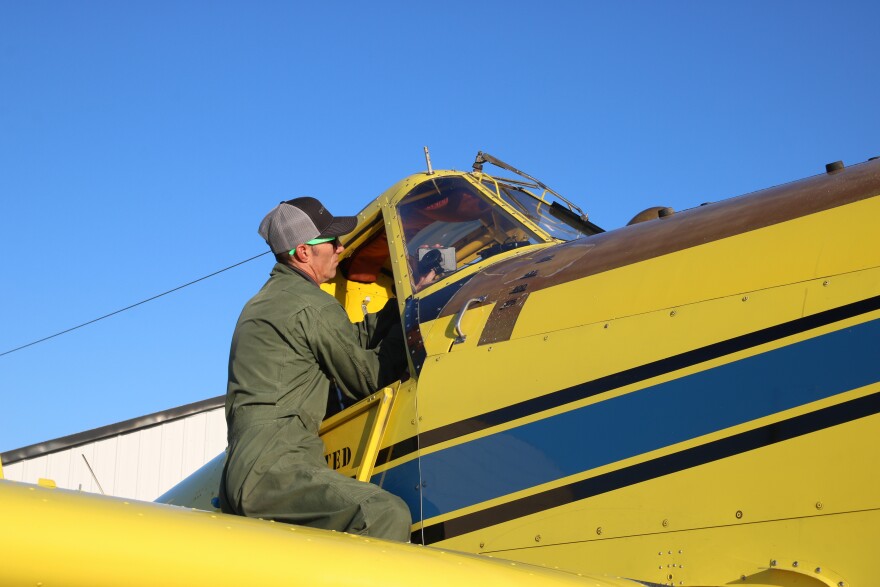A giant canvas bag full of seed hangs from a fork lift on the Crop Air tarmac in Eaton. It’s a mix of sorghum, rye, radishes and turnips, weighing in around 2,000 pounds.
Get top headlines and KUNC reporting directly to your mailbox each week when you subscribe to In The NoCo.
The fork lift maneuvers over to a bright, yellow airplane. Neil Wicke jumps up on the wing, takes out a knife, and cuts the bag open. The seeds sound like a rainstick as they drop into the hatch.
This airplane is actually an air tractor. Wicke’s a crop duster, and his job this morning is to spread this cover crop over an 80-acre corn field in Ault.
Once he’s above the field, he dives down at 140 miles per hour, skimming only 30 feet above the corn rows. Sometimes, he’s flying as low as 10 feet. That minimizes the drift and makes the application just right.
“Maneuvering that low to the ground, that fast is a different sensation,” Wicke said. “Being up above the countryside and looking out at everything, getting a perspective on God's creation, it's really cool.”
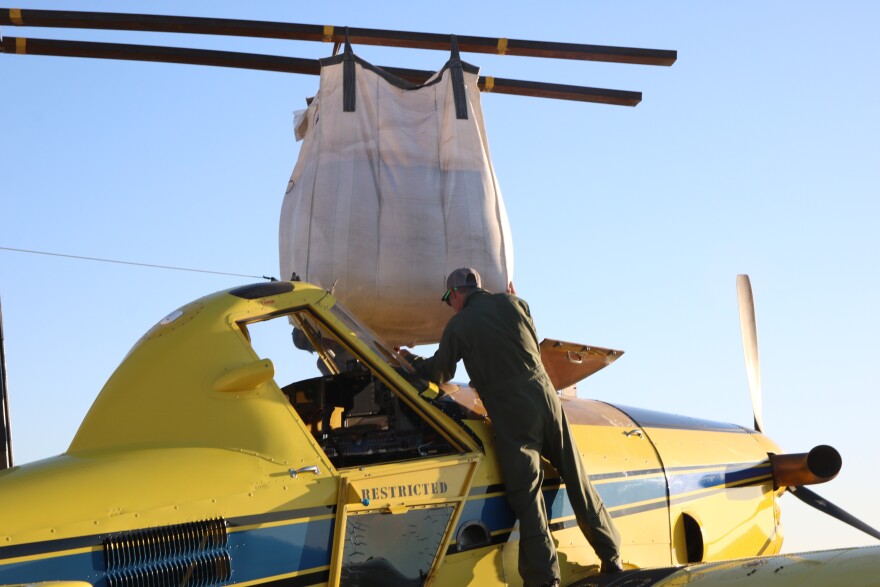
Growing up in rural Western Kansas, Wicke worked on his family’s farm and saw crop dusters all the time. He never thought about being a pilot. But while studying at Aims Community College he got curious and took an introductory flight.
“The very minute that we took off, I was like, ‘I'm doing this the rest of my life,’” he said.
He later realized he could combine his loves of agriculture and aviation. Wicke is now one of around 3,400 ag pilots in the United States, according to the National Agricultural Aviation Association. He’s owned and operated Crop Air since 2018 and has customers from Brighton to Cheyenne.
Getting up at the crack of dawn to spray chemicals and drop seeds over fields the whole day is a demanding – and often dangerous – job.
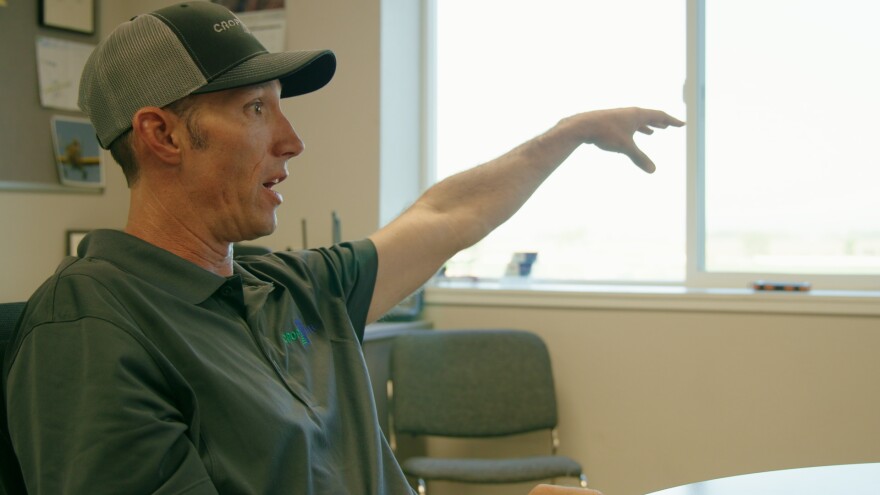
“I wouldn't call (it) for the thrill seeking type,” he said. “I've always said that you've got to be cowboy enough to get on the horse, but you don't want to be so cowboy that you start pushing safety and pushing the limits.”
But without it, farmers could lose hundreds of millions of crops, like wheat, soybeans and corn.
“We can get in there quickly, efficiently, to take care of the problems that they have and be able to help sustain that crop,” he said. “That way they can feed their family and continue feeding the world.”
But there’s been a lot of growth in Northern Colorado – more houses, light poles and towers popping up next to big fields —that is not ideal for a pilot in a diving plane.
“We've got almost 200-foot-tall power lines that are running along Highway 85 now,” Wicke said. “It is a risk. It is a danger.”
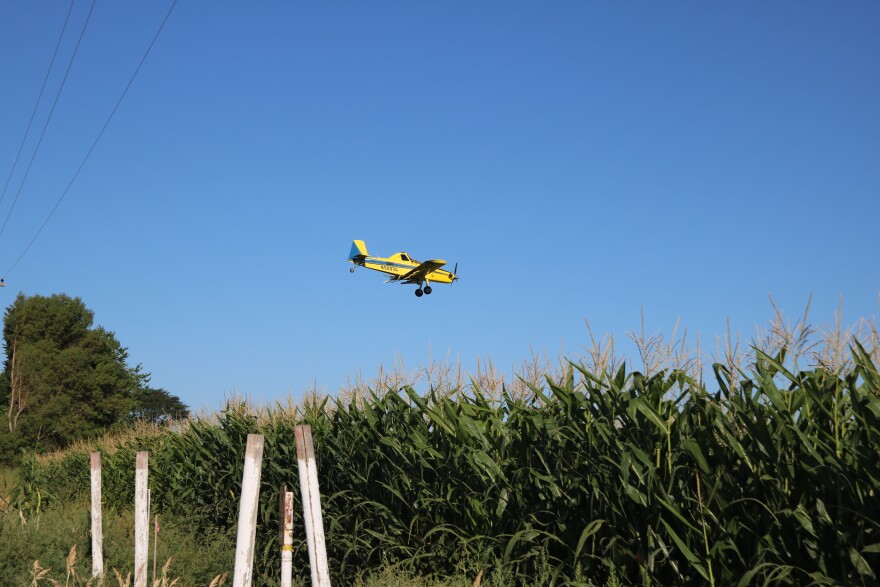
So, Wicke and his team got a drone. This is not like one you can buy at your local electronics store. It’s seven feet tall and holds about 40 pounds.
Crop Air’s drone pilot Joseph Daviss has done some test runs with it. Flying it has taught him about how to apply properly before he’s up in a plane someday. And, it’s really precise.
“I can tell it how to fly, how fast to fly, what direction do I want to spray the field in, lay down waypoints exactly where I want them,” Daviss said.
Now, the company’s been able to treat fields it’s never done before. Some who are a bit price sensitive may balk a bit, but most customers are intrigued and like having it as another option.

“They see the drone, and they're like, ‘Wow, that's really amazing,’” Daviss said. “Around here, I think it’s going to explode.”
FAA drone registrations for agricultural use have recently skyrocketed. Investigate Midwest reports there’s around 1,000 registered pilots as of this year – with the majority getting approved last year. On a global scale, it’s booming. Drone manufacturer DJI reports there were 400,000 drones in the skies in 2024 specifically for agriculture.
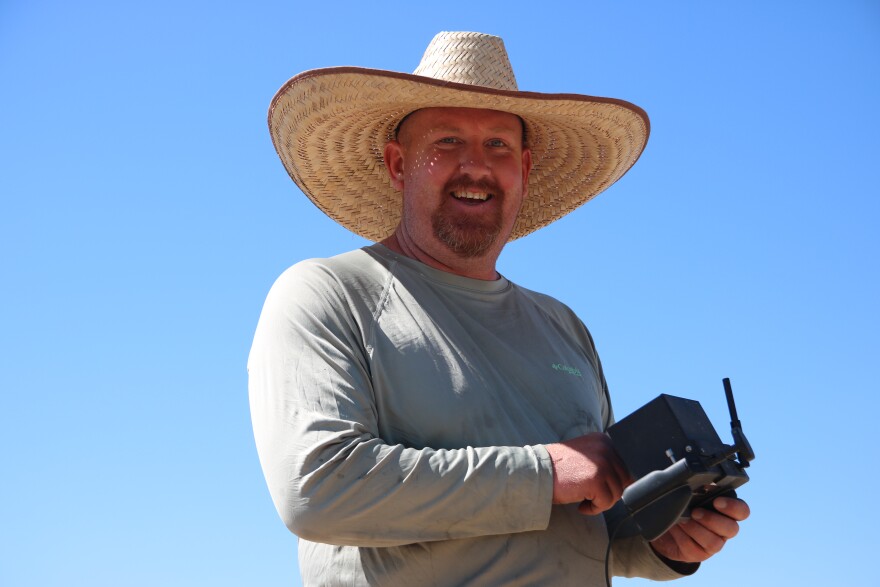
Meanwhile, several ag leaders share that many crop duster pilots are retiring, and younger pilots are not hopping into the cockpit.
Part of that could be due to safety. The National Transportation Safety Board tracked three fatal deaths of crop dusters since 2020 in Colorado.
“We've seen a significant decline in crop dusters over the last 10 years,” Briana Layfield, president of Ag-Bee, a drone application company in California, said. “That's telling you, who's going to fill that void, right?”
Layfield said while drones have the capability, they still face a cost and capacity issue. Big drones are pricey, hard to transport, and only carry around 1/5 of what a plane can. The smaller ones are more affordable, but they would have to fill up even more.
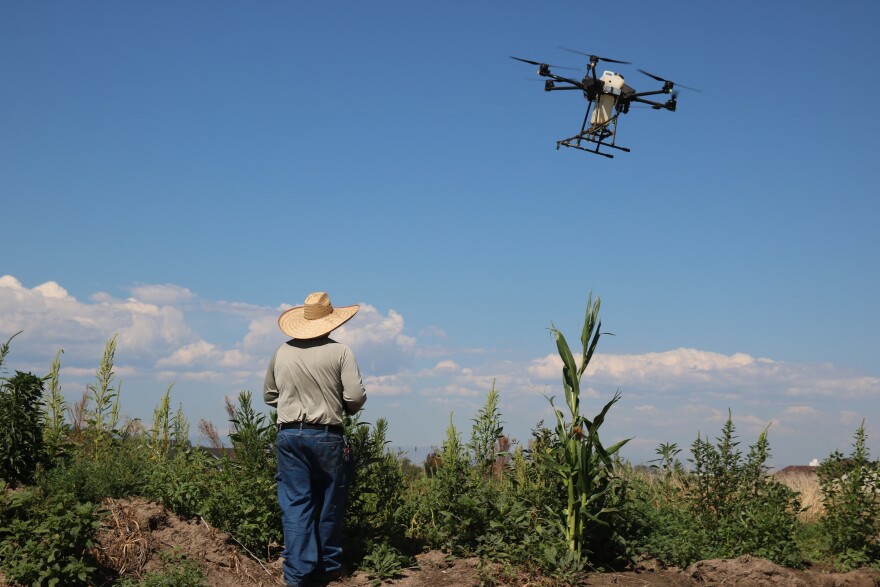
“When you're dealing with those kind of volumes with a drone, you're limited on the amount of acreage that you can actually complete in a day,” she said. “That makes a huge difference on what we have to charge, how much can we get through.”
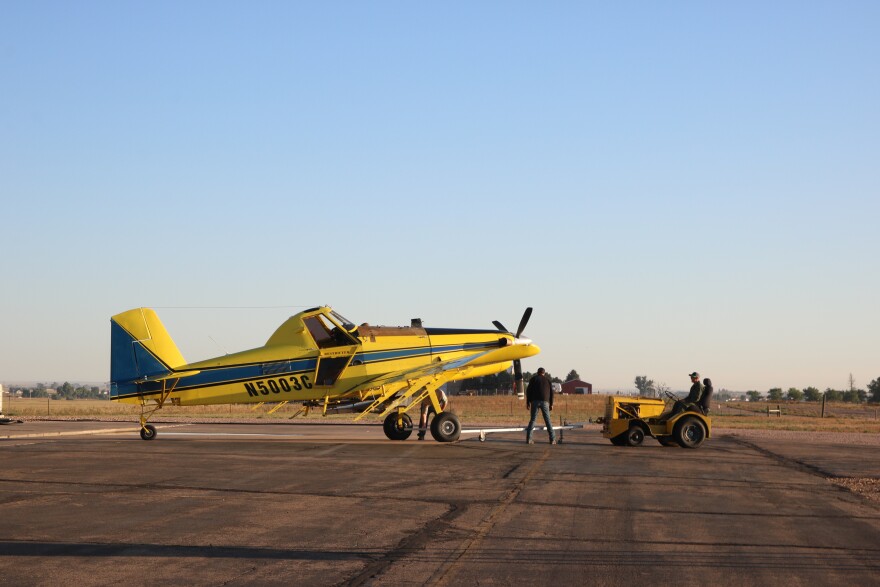
Once the tech catches up, Layfield sees an unmanned future. But for now, she said crop dusters shouldn’t worry about drones taking their jobs because they serve their own niche.
“I do not want to go and apply on 100,000 acres of pistachio orchards in Central Valley because that's ridiculous,” she said. “It doesn't make any sense. This isn't the right tool for that.”
Wicke agrees. He said it’s not “us versus them."
“It's just like the same reason you wouldn't take an airplane to spray my quarter acre yard,” he said. “It's just too big of a tool.”
Wicke and his team are figuring out how to make these work in tandem. By and large, they’re using planes, but they’ve deployed the drone for around 20 smaller acre projects.
But even if drones take over the skies, Wicke believes crop dusters will stay in the industry out of pure passion.
“Everybody that's an ag pilot really enjoys agriculture,” he said. “They understand what their job really does for the farmers and ranchers of this country. We want to do this.”
Wicke recently purchased a larger drone that can hold 100 pounds – more than double their current drone’s capacity. He plans to use it on fields next season.
This story is part of a collaboration with Rocky Mountain PBS.


